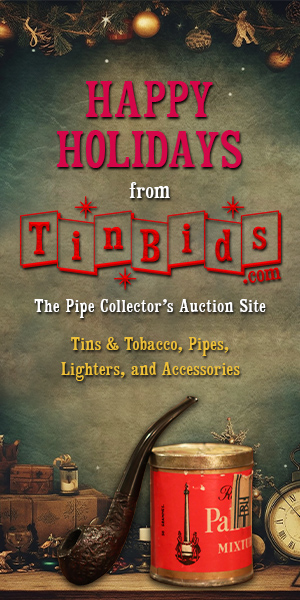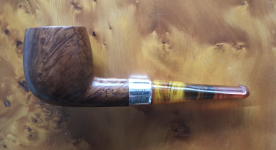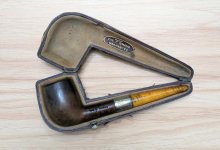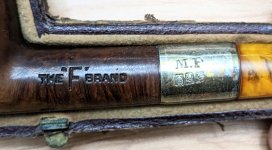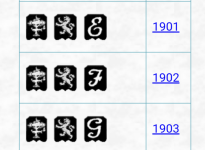Looking for any help in further identification of an English Bent Bulldog pipe I recently acquired and just got back from restoration. It's a really cool little pipe with (to me anyways) attractive angular lines in the shank. The pipe is stamped "The 'F' Brand" on the shank, and the silver collar is stamped W.R with no frame or outline (unknown sponsor's/maker's mark), plus Birmingham 1919 silver hallmarks (Anchor = Birmingham, Lion Passant = 92.5% silver purity, letter U = year 1919).
I saw an older thread where someone else had an 'F' Brand pipe, but that one had Glasgow silver hallmarks (not Birmingham) with M.F. (not W.R) sponsor's/maker's mark. It was opined that that pipe was likely sold by Montague Alexander Friedlander and Julia Friedlander who traded as A. Friedlander & Co in Glasgow and were listed as wholesale tobacconists and pipe mounters.
Based on different assay offices and different sponsor's/maker's marks, I'm guessing that the 'F' Brand pipes were made by a third party and then resold thru various tobacconists back in the day? Anyone else have an 'F' Brand pipe or a pipe marked with W.R sponsor's/maker's mark that might be able to help me further identify maker or reseller of my pipe?
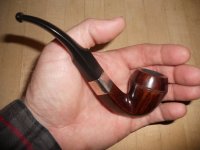
I saw an older thread where someone else had an 'F' Brand pipe, but that one had Glasgow silver hallmarks (not Birmingham) with M.F. (not W.R) sponsor's/maker's mark. It was opined that that pipe was likely sold by Montague Alexander Friedlander and Julia Friedlander who traded as A. Friedlander & Co in Glasgow and were listed as wholesale tobacconists and pipe mounters.
Based on different assay offices and different sponsor's/maker's marks, I'm guessing that the 'F' Brand pipes were made by a third party and then resold thru various tobacconists back in the day? Anyone else have an 'F' Brand pipe or a pipe marked with W.R sponsor's/maker's mark that might be able to help me further identify maker or reseller of my pipe?




